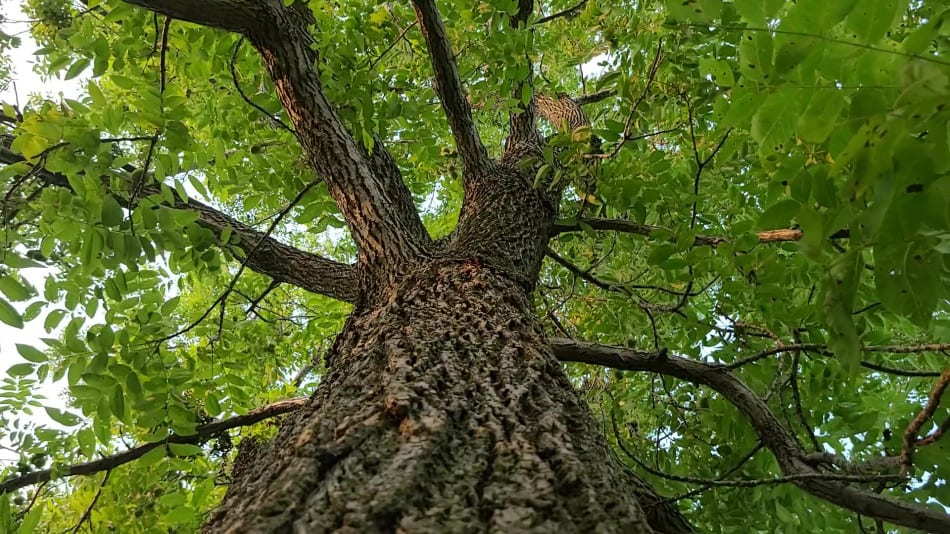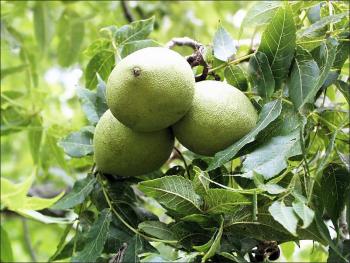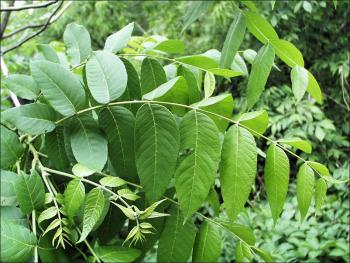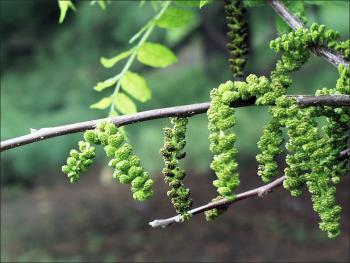Black walnut (Juglans nigra) is native to Iowa and found in all 99 counties. It occurs on a variety of sites, but is most common on bottomlands, stream terraces, and moist sheltered coves and slopes. It grows best on deep, rich, well drained soils. It usually has a full, well-formed trunk with no branches for quite some distance from the ground. The crown is oval to rounded and somewhat open. A typical black walnut reaches 50 to 75 feet, but it may reach maximum heights of 125 to 150 feet. The leaves are alternately arranged on the twig, compound with 1 to 23 leaflets, and ranging in size from 1 to 2 feet.
Common associates of black walnut vary as much as the sites but include oaks, basswood, maples, ashes, and Kentucky coffeetree. Walnut is considered a good invader species and often is one of the first species to become established in abandoned fields and pastures. Squirrels are especially fond of the nuts and aid in the establishment of walnut on these sites. Black walnut roots produce chemicals called juglones which are very toxic to certain other plants such as azaleas, rhododendrons, blueberries, peonies, and solanaceous crops (tomatoes, peppers, potatoes). Most of the toxicity is limited to within the drip line of the tree, but the area of toxicity typically increases outward as the tree matures. sources: Iowa State University Extension and Outreach, Dickinson County Conservation
0 Comments
Leave a Reply. |
Archives
June 2024
Categories
All
|
Address712 South Highway Street
P.O. Box 189 Oakland, IA 51560 |
ContactPhone: 712-482-3029
General inquiries: [email protected] Visit our Staff Page for email addresses and office hours. |






 RSS Feed
RSS Feed